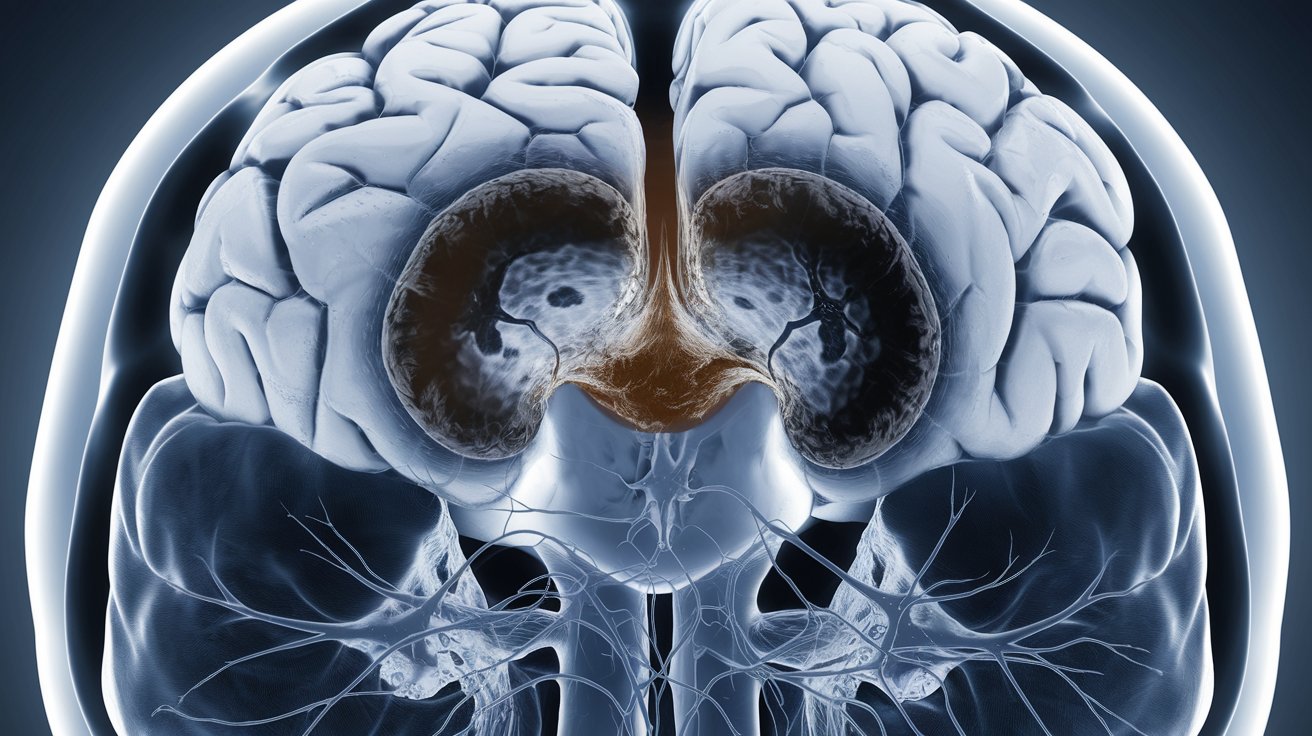
What are Choroid Plexus Neoplasms? These rare brain tumors originate from the choroid plexus, a structure in the brain that produces cerebrospinal fluid (CSF). Found mostly in children under five, they can be either benign or malignant. Why should you care? Symptoms like increased head size in infants or headaches in adults can signal their presence. Early detection and treatment are crucial for better outcomes. How are they treated? Surgery is the primary method, often followed by chemotherapy or radiotherapy for malignant types. Understanding these tumors can help in recognizing symptoms early and seeking timely medical intervention.
Key Takeaways:
- Choroid plexus neoplasms are rare brain tumors that can affect both children and adults, with most cases being benign. Surgery is the primary treatment, and ongoing research aims to improve understanding and treatment strategies.
- These tumors can cause symptoms related to increased intracranial pressure and obstruction of cerebrospinal fluid pathways. Understanding their histology and location is crucial for diagnosis and treatment planning.
What Are Choroid Plexus Neoplasms?
Choroid plexus neoplasms are rare brain tumors originating from the choroid plexus, which produces cerebrospinal fluid (CSF). These tumors can be benign or malignant, affecting both children and adults.
-
Definition and Origin: Choroid plexus neoplasms are primary central nervous system (CNS) tumors derived from the epithelial cells of the choroid plexus.
-
Incidence: The overall annual incidence of choroid plexus neoplasms for all ages is approximately 0.3 cases per million.
Who Gets Choroid Plexus Neoplasms?
These tumors are more common in children, especially those under five years old. However, adults can also develop these neoplasms.
-
Age Distribution: Most commonly seen in children, particularly those under the age of 5 years. In children, they account for up to 5% of all brain tumors and up to 20% of those occurring in the first year of life.
-
Benign vs. Malignant: Most choroid plexus neoplasms are benign, but a small percentage are malignant. The most common type is the choroid plexus papilloma (CPP), which is benign and accounts for up to 90% of all choroid plexus tumors in children.
How Are They Classified?
Choroid plexus neoplasms are classified based on their histological features, which helps determine their treatment and prognosis.
- Histological Classification: Choroid plexus neoplasms are classified into three World Health Organization (WHO) grades: Grade I (Choroid plexus papilloma), Grade II (Atypical choroid plexus papilloma), and Grade III (Choroid plexus carcinoma).
What Symptoms Do They Cause?
Symptoms often result from the obstruction of CSF pathways, leading to increased intracranial pressure and other related issues.
- Symptoms: Symptoms typically arise from the obstruction of cerebrospinal fluid (CSF) pathways, leading to increased intracranial pressure and potential hydrocephalus. Other symptoms include increased head circumference in children, altered mental status, and signs of increased intracranial hypertension in adults.
Where Are They Located?
The location of these tumors can vary, affecting different parts of the brain's ventricular system.
- Location: The most common location in children is the atrium of the lateral ventricle, while in adults, it is the fourth ventricle. Rare locations include the third ventricle, cerebellopontine angle (CPA), and cerebral parenchyma.
How Common Are They?
Although rare, choroid plexus neoplasms have specific epidemiological characteristics.
- Epidemiology: Choroid plexus papillomas account for about 1% of all brain tumors and 2-4% of pediatric brain tumors. They are more common in males, with a male-to-female incidence ratio of approximately 1.2:1.
Are They Linked to Any Syndromes?
Certain genetic syndromes can increase the risk of developing choroid plexus neoplasms.
- Associated Syndromes: Choroid plexus papillomas have been associated with von Hippel-Lindau syndrome and Li-Fraumeni syndrome.
How Are They Diagnosed?
Imaging techniques like MRI and CT scans are crucial for diagnosing these tumors.
- Radiological Features: Imaging typically shows intraventricular enhancing masses. MRI and CT scans are essential for diagnosis and localization of the tumor.
What Are the Treatment Options?
Treatment varies depending on whether the tumor is benign or malignant, with surgery being the primary approach.
-
Treatment: The primary treatment for choroid plexus papilloma is surgical resection, which is often curative. For malignant choroid plexus carcinomas, surgery is followed by adjuvant treatments such as radiotherapy and chemotherapy.
-
Surgical Challenges: Surgical resection of choroid plexus tumors poses significant risks and challenges due to the delicate nature of the brain tissue and the potential for intraoperative hemorrhage.
What Factors Affect Prognosis?
Several factors, including the tumor's histology and the success of surgical resection, influence the prognosis.
- Prognostic Factors: Histology is the most important prognostic factor, with benign papillomas having significantly better survival rates compared to malignant carcinomas. Surgery is prognostically relevant for both benign and malignant tumors, with radiotherapy improving survival in malignant cases.
Is Chemotherapy Effective?
Chemotherapy can be part of the treatment plan, especially for malignant tumors.
- Chemotherapy: Chemotherapy has been shown to improve survival in patients with choroid plexus carcinomas, although its effectiveness varies.
Can These Tumors Relapse?
Relapse is a concern, particularly for malignant tumors.
- Relapse: Relapse after primary treatment is a poor prognostic factor in malignant cases but not in benign papillomas.
What About Hydrocephalus?
Hydrocephalus is a common complication due to CSF obstruction.
- Hydrocephalus: Cases of hydrocephalus may not always be resolved with surgery, possibly due to derangement of reabsorption mechanisms or blockage at other sites in the ventricular system.
What Other Effects Do They Have?
The tumor's mass effect can cause various symptoms depending on its location.
-
Mass Effect: The tumor itself can cause mass effect, leading to symptoms dependent on its location within the brain.
-
Food Refusal and Behavioral Changes: Symptoms such as food refusal, apathy, speechlessness, and low mood have been reported in patients with choroid plexus tumors.
How Do They Develop?
Understanding the development of the choroid plexus helps in understanding these tumors.
- Embryology and Anatomy: The choroid plexus begins to differentiate in the sixth week of gestation and appears in the roof of the fourth ventricle, then in the lateral ventricles, and finally in the third ventricle.
What Is the Role of CSF?
The choroid plexus plays a crucial role in CSF production, which is vital for brain function.
- CSF Production: The choroid plexus is responsible for producing CSF, which actively regulates its constituents to maintain proper brain environment.
What Do They Look Like Pathologically?
Pathological examination reveals various features depending on the tumor's grade.
- Pathological Features: Choroid plexus neoplasms exhibit various pathological features, including papillary projections and cystic changes, depending on their histological grade.
How Are They Diagnosed?
A combination of clinical information, CSF studies, and biopsy is needed for a definitive diagnosis.
- Diagnostic Approaches: Clinical information, CSF studies, and biopsy are necessary for a final diagnosis, as imaging patterns alone may not be diagnostic.
Can They Be Metastatic?
Metastatic involvement of the choroid plexus is rare but possible, especially in aggressive tumors.
- Metastatic Neoplasms: Metastatic neoplasms involving the choroid plexus in children are rare and typically originate from aggressive tumors such as neuroblastoma or retinoblastoma.
What Are the Treatment Outcomes?
Outcomes depend on the tumor's histological grade and the effectiveness of the treatment.
- Treatment Outcomes: The treatment outcomes for choroid plexus tumors vary based on histological grade and the effectiveness of surgical resection, adjuvant therapies, and chemotherapy.
What Does the Future Hold?
Research continues to improve our understanding and treatment of these rare tumors.
- Research and Future Directions: Limited information is available regarding the biology and best treatment modalities for choroid plexus tumors. Ongoing research aims to improve our understanding of these rare neoplasms and develop more effective treatment strategies.
Final Thoughts on Choroid Plexus Neoplasms
Choroid plexus neoplasms, though rare, present significant challenges and unique characteristics. These tumors, originating from the choroid plexus, can be benign or malignant, with the majority being choroid plexus papillomas. They mostly affect young children but can also occur in adults. Symptoms often stem from increased intracranial pressure due to CSF obstruction, leading to hydrocephalus and other neurological issues. Diagnosis relies heavily on imaging techniques like MRI and CT scans, while treatment primarily involves surgical resection. Malignant cases may require additional therapies such as chemotherapy and radiotherapy. Prognosis varies based on the tumor's histological grade and the success of surgical intervention. Continued research is crucial for improving treatment strategies and patient outcomes. Understanding these tumors' complexities helps in managing and potentially curing those affected by this rare condition.
Frequently Asked Questions
Was this page helpful?
Our commitment to delivering trustworthy and engaging content is at the heart of what we do. Each fact on our site is contributed by real users like you, bringing a wealth of diverse insights and information. To ensure the highest standards of accuracy and reliability, our dedicated editors meticulously review each submission. This process guarantees that the facts we share are not only fascinating but also credible. Trust in our commitment to quality and authenticity as you explore and learn with us.


